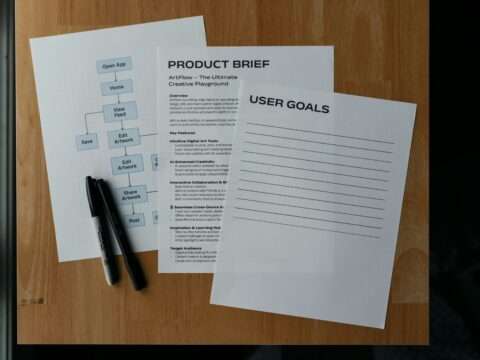Financing your business plan for a loan application includes knowledge and strategy. Whatever your plan is, lenders want proof of how much knowledge you have. A strong business plan talks about your business’s future instead of simply asking for money.
You must know why a business plan is essential, what lenders look for, and how you can prepare a clear, loan-ready plan that gives you the best chance at approval.
Why a Business Plan Matters
Your business plan for a loan application serves two main purposes: it convinces lenders you’re worth the risk, and it helps you understand your own numbers and goals better.
Most lenders, including banks and alternative financing providers, use your plan to gauge how you’ll repay the loan. A well-prepared plan answers key questions before they’re asked:
- How much money do you need, and why?
- How will it be used?
- What are your projected revenues and profits?
- How soon can you start making repayments?
According to the U.S. Small Business Administration (SBA), a complete business plan sets the foundation of your business and allows you to move forward strategically. From operations to marketing to financial projections.
Investors do not invest in your idea, but in your ability to execute things. A clear, confident plan tells them you’re ready to turn funding into growth.
Key Sections of a Loan-Ready Business Plan
A loan-ready business plan should be detailed but easy to follow. Every strong plan includes the following.
1. Executive Summary
Your executive summary is what catches their attention. Keep it short but mention all the necessary information about your business, what it does, your funding goals, and why now is the right time to invest in your idea.
2. Business Information
You will have to mention every basic detail about your company, including its history and goals. Along with basic contact details.
It is also a good idea to explain your work, talk about how you helped clients, and why you are better than your competitors.
3. Market Analysis
The party lending you money wants to know your understanding of the market. When you can explain your business to them, they see you as someone they can work with. Details such as the target market and real-world data show them you take your business seriously and are extremely professional.
4. Products and Services
Talk about what you are offering, and talk about the benefits to your customers. Don’t just list the products; explain your value proposition.
For instance, if you run a gym, don’t just say you sell memberships. Emphasize how your programs focus on holistic health or specialized fitness solutions.
Also, outline future plans, new products, services, or technologies that can increase your revenue streams.
5. Marketing and Sales Strategy
Your loan business plan must show lenders you have a roadmap for growth. Discuss how you’ll attract and retain customers.
Include details like the following.
- Advertising
- Sales funnel and conversion goals.
- Pricing
- Customer loyalty programs.
If your business is already operating, mention past marketing wins, like successful campaigns, customer growth, or repeat sales percentages.
6. Management and Operations
Lenders prefer funding teams with experience. Highlight your team’s background, key roles, and expertise.
Include short bios for founders or managers, emphasizing experience that aligns with your business. For small businesses, this is often where you show lenders that you know your industry inside and out.
Also, describe how your daily operations run, suppliers, staffing needs, inventory systems, and logistics.
7. Financial Plan
This is the most critical section for lenders. Your business plan for funding must clearly outline how the loan fits into your financial picture.
Include:
- Startup or expansion costs – What you’ll use the loan for (equipment, marketing, renovations, etc.).
- Revenue projections – Monthly or quarterly income expectations.
- Expense breakdown – Operating costs, salaries, inventory, and rent.
- Profit and loss forecast – A realistic view of profitability.
- Statement for Cash Flow- Understanding the ‘Cash In’ and ‘Cash Out’ of Your Business
Lenders want to know your strategy for paying debt. Also show them the point you expect to break even and your plan on maintaining a positive cash flow to pay debt.
Tips for a Successful Loan-Ready Business Plan
Writing your plan is one thing; making it loan-ready is another. Here are practical ways to make your business plan for a loan application stand out:
1. Keep It Clear and Concise
Avoid long, jargon-filled sections. Lenders appreciate clarity. Stick to plain language and simple visuals like graphs and tables where possible.
2. Back Up Your Claims
Whenever you mention market growth or future profits, back it with data. Cite reports from trusted sources or include short references. It builds trust and credibility.
3. Show Skin in the Game
If you’ve personally invested money into your business, mention it. It shows commitment and reduces perceived lender risk.
4. Align Your Loan Request With Goals
Don’t just ask for money, explain exactly how it will drive growth. For instance, instead of saying “I need $100,000 for expansion,” say “I need $100,000 to open a second wellness studio projected to increase annual revenue by 35%.”
5. Review and Refine
Before submitting, review your plan for errors, unrealistic projections, or missing details. If possible, have a financial advisor or mentor look it over.
Common Mistakes to Avoid
Many entrepreneurs lose loan opportunities over avoidable mistakes. Here are the most common ones to watch out for:
- Missing financial documents.
- Unrealistic revenue projections.
- Lack of a clear repayment plan.
- Copy-pasted templates without customization.
- Ignoring your credit history.
A loan-ready business plan should reflect your unique goals and circumstances, not a one-size-fits-all template.
How Bizfund Can Help
At Bizfund, we understand that writing a business plan can feel overwhelming, especially when it’s tied to your financing goals. That’s why we help business owners not only apply for funding but also create a clear, lender-approved business plan for a loan application.
Our team works with you to refine projections, highlight strengths, and align your plan with your funding options, whether it’s for working capital, expansion, or equipment financing.
By combining smart planning with personalized funding solutions, Bizfund helps small businesses get the capital they need faster and with less stress.
Key Takeaway
A well-prepared business plan for a loan application is your gateway to financial growth. It shows lenders that you understand your market, your numbers, and your goals. The more prepared and transparent you are, the higher your chances of approval.
Whether you’re launching a new business or expanding an existing one, take the time to plan your funding wisely. And if you need help along the way, Bizfund is here to guide you from plan to approval, one step at a time.




